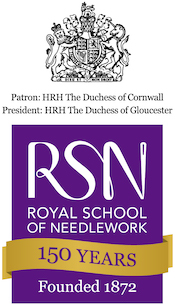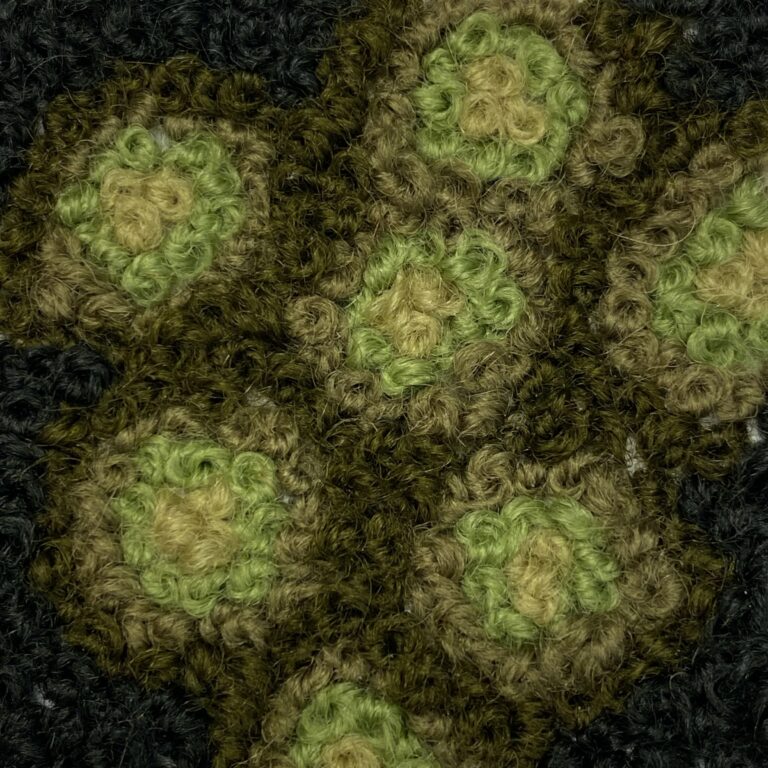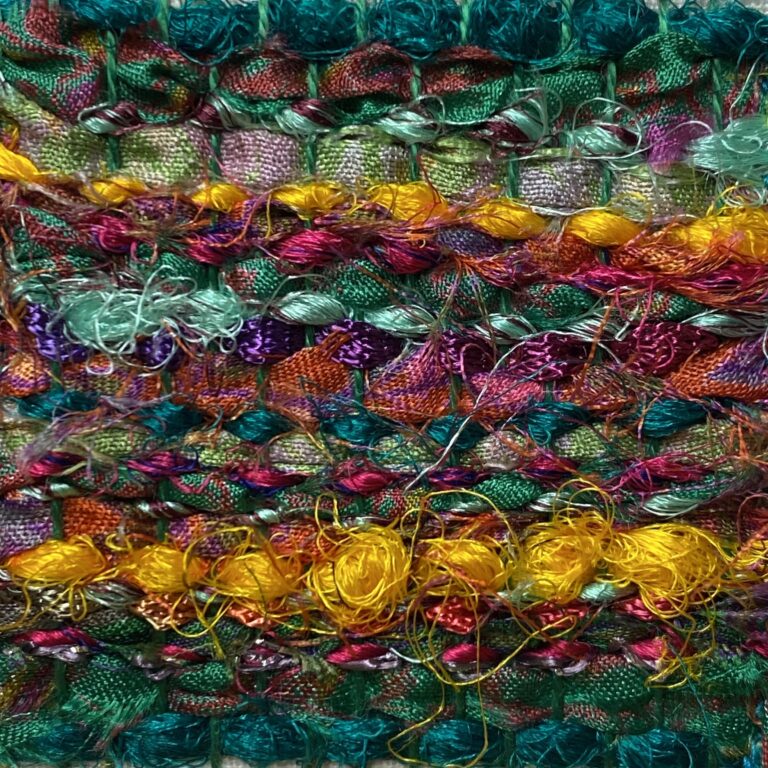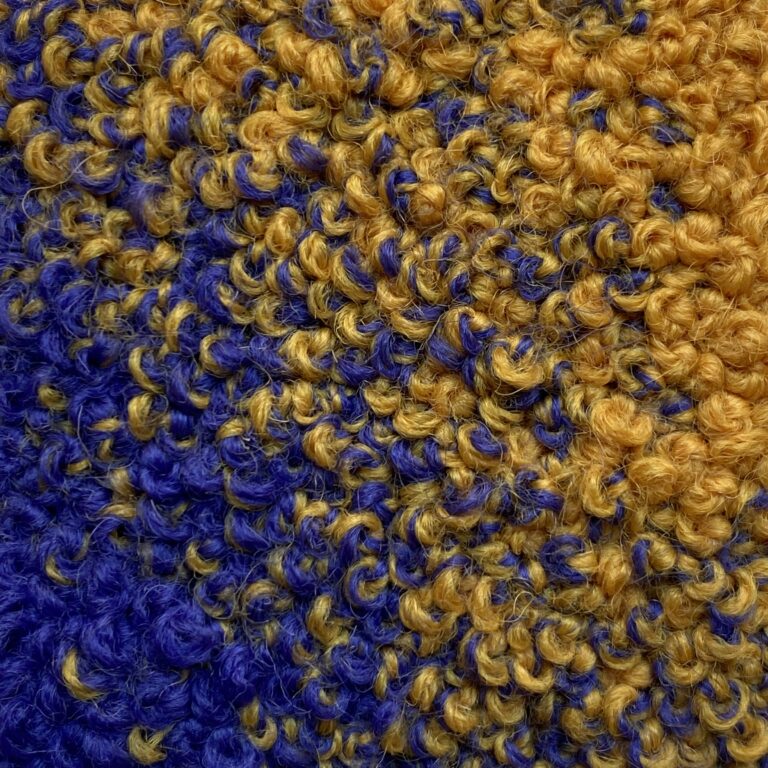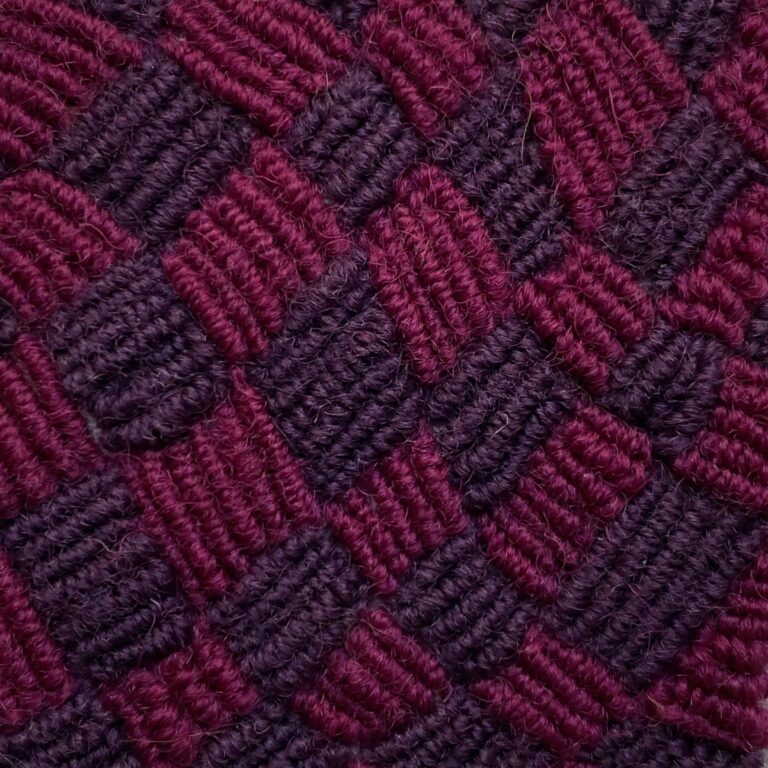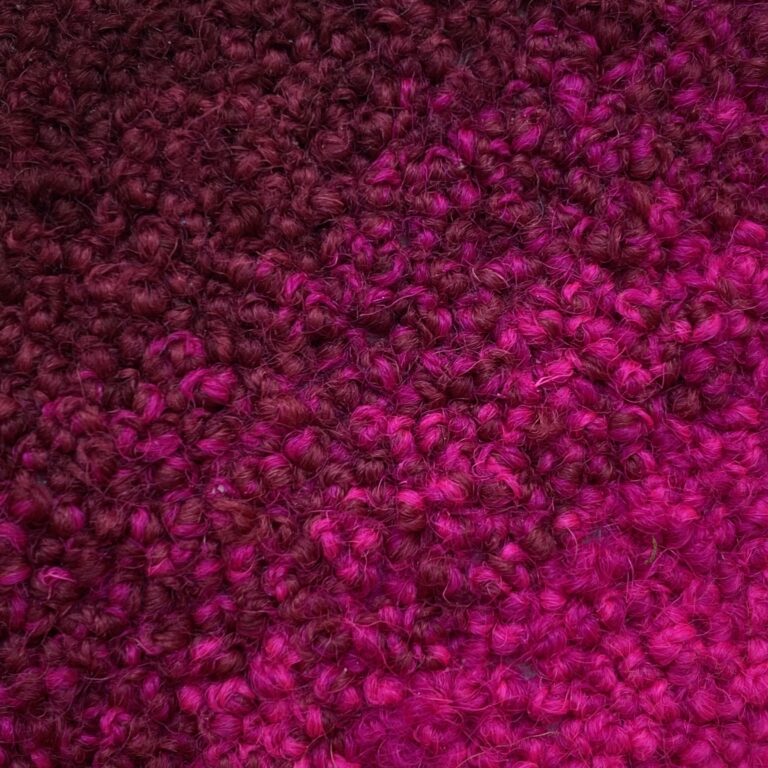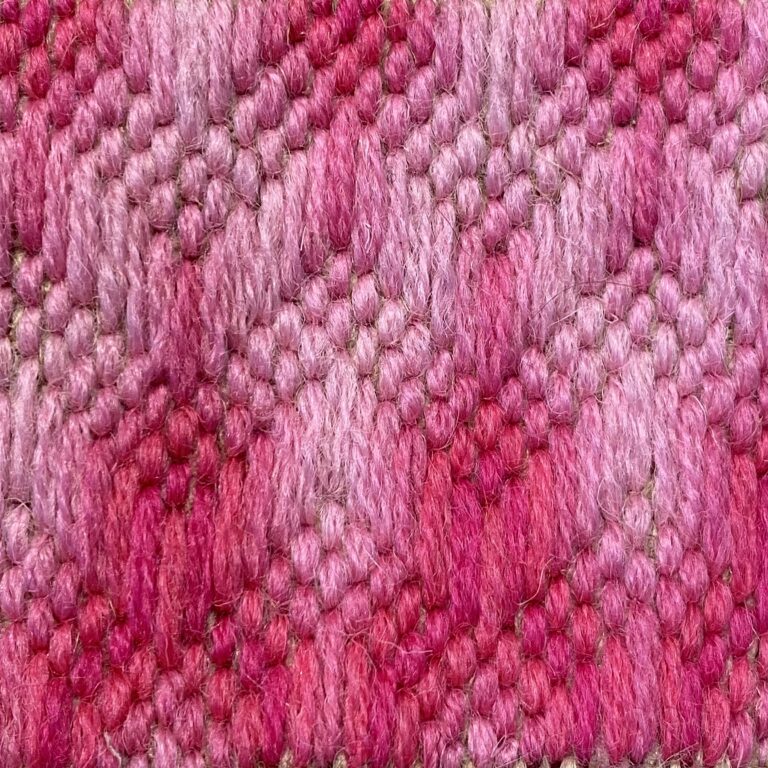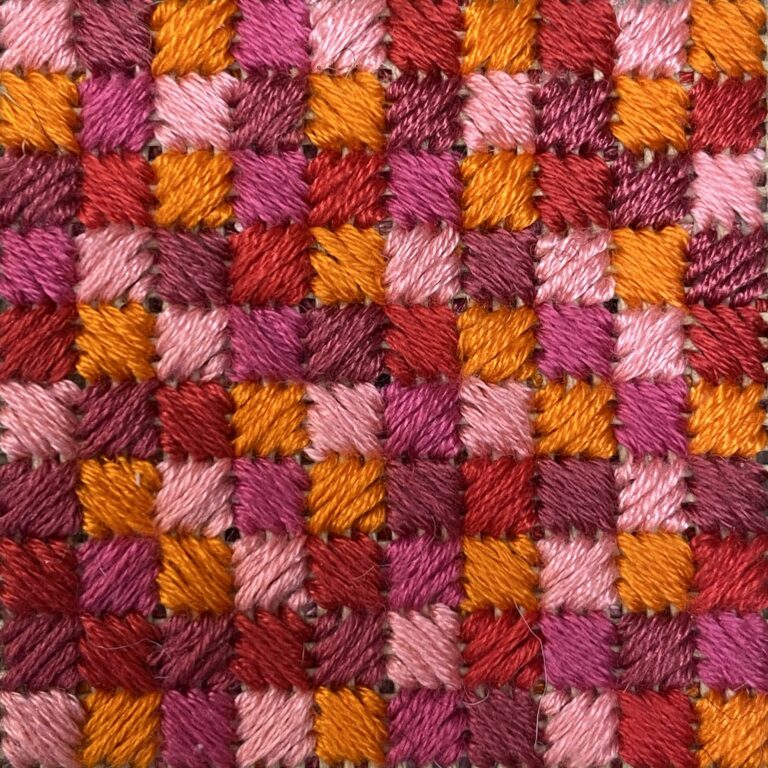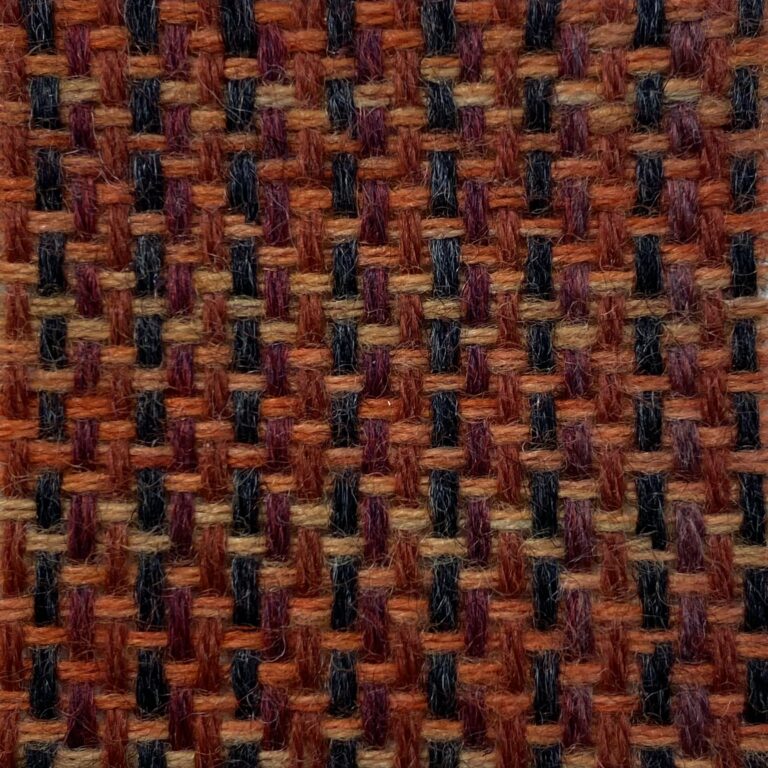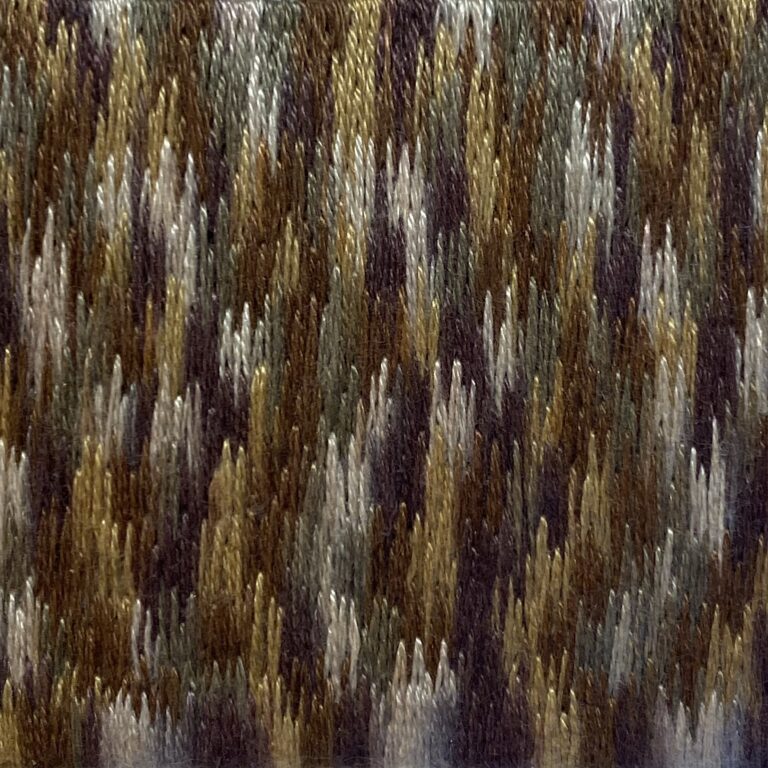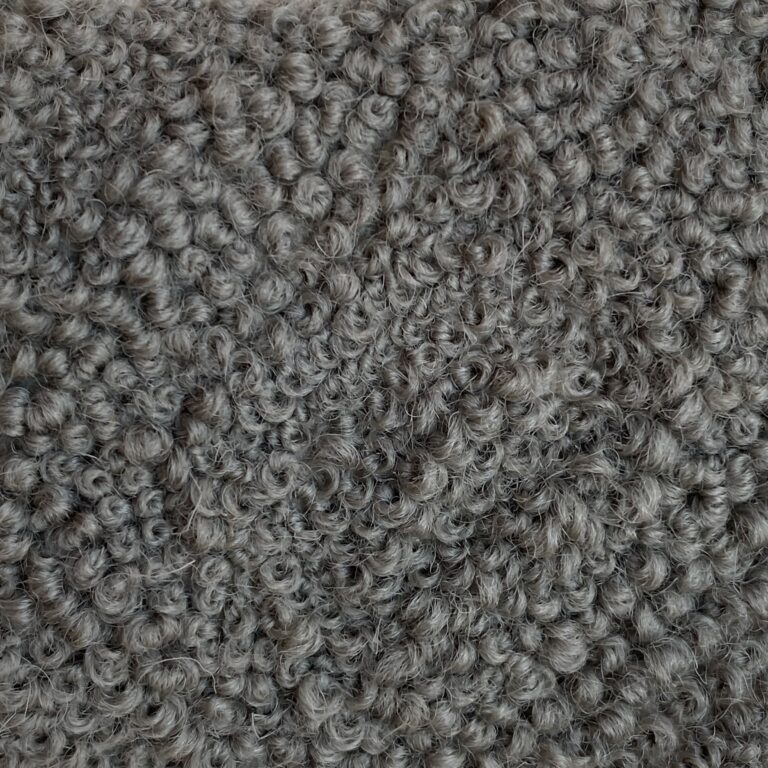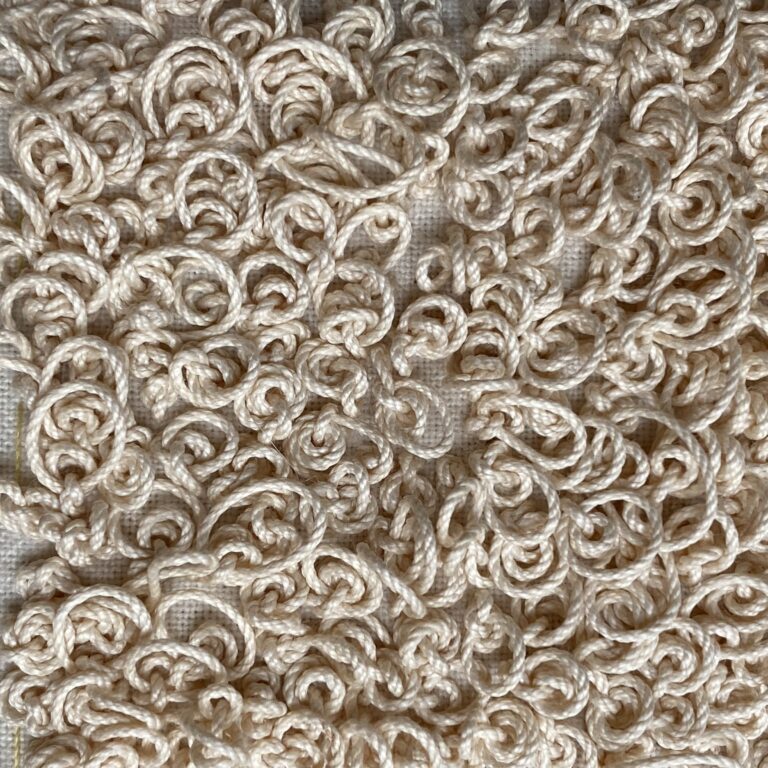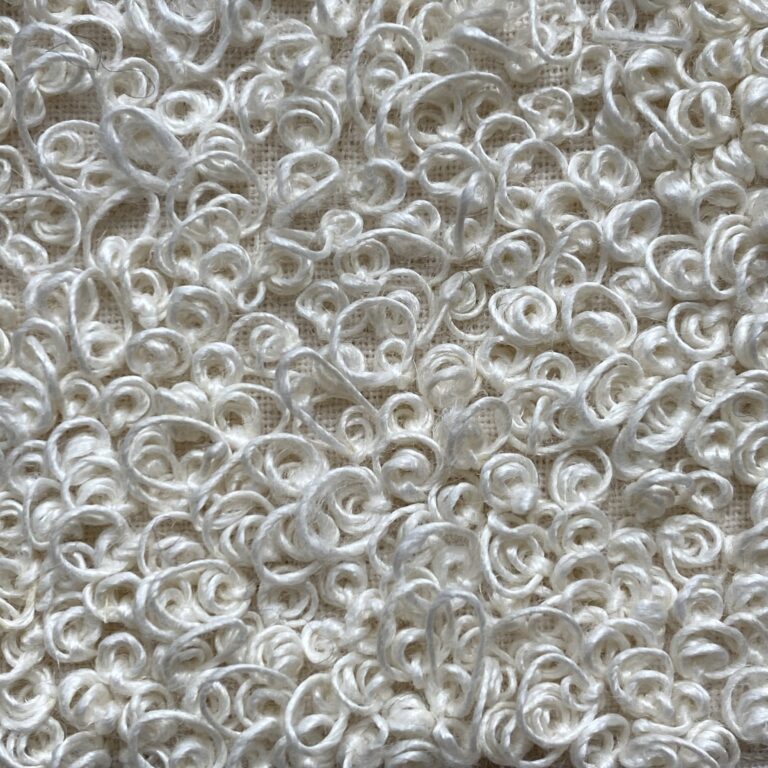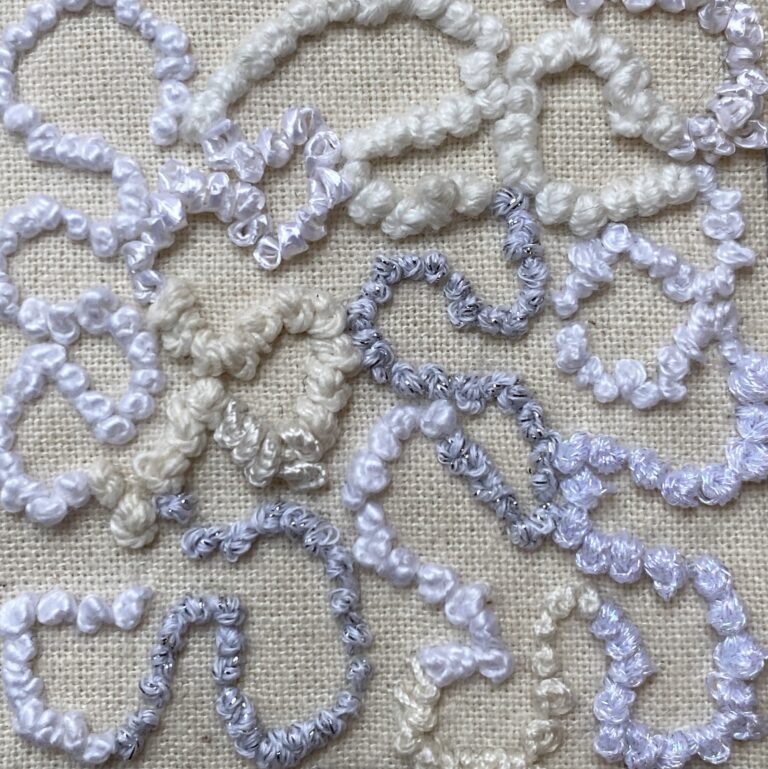‘Hand Embroidery: Skills and Studies’, is an e-certificated sampler-based course exploring, learning and developing stitch and embroidery techniques, whilst studying and researching traditional, historical, domestic, international and contemporary embroideries and textiles. The course was developed and taught by Tracy A Franklin, and piloted onsite from September 2024.
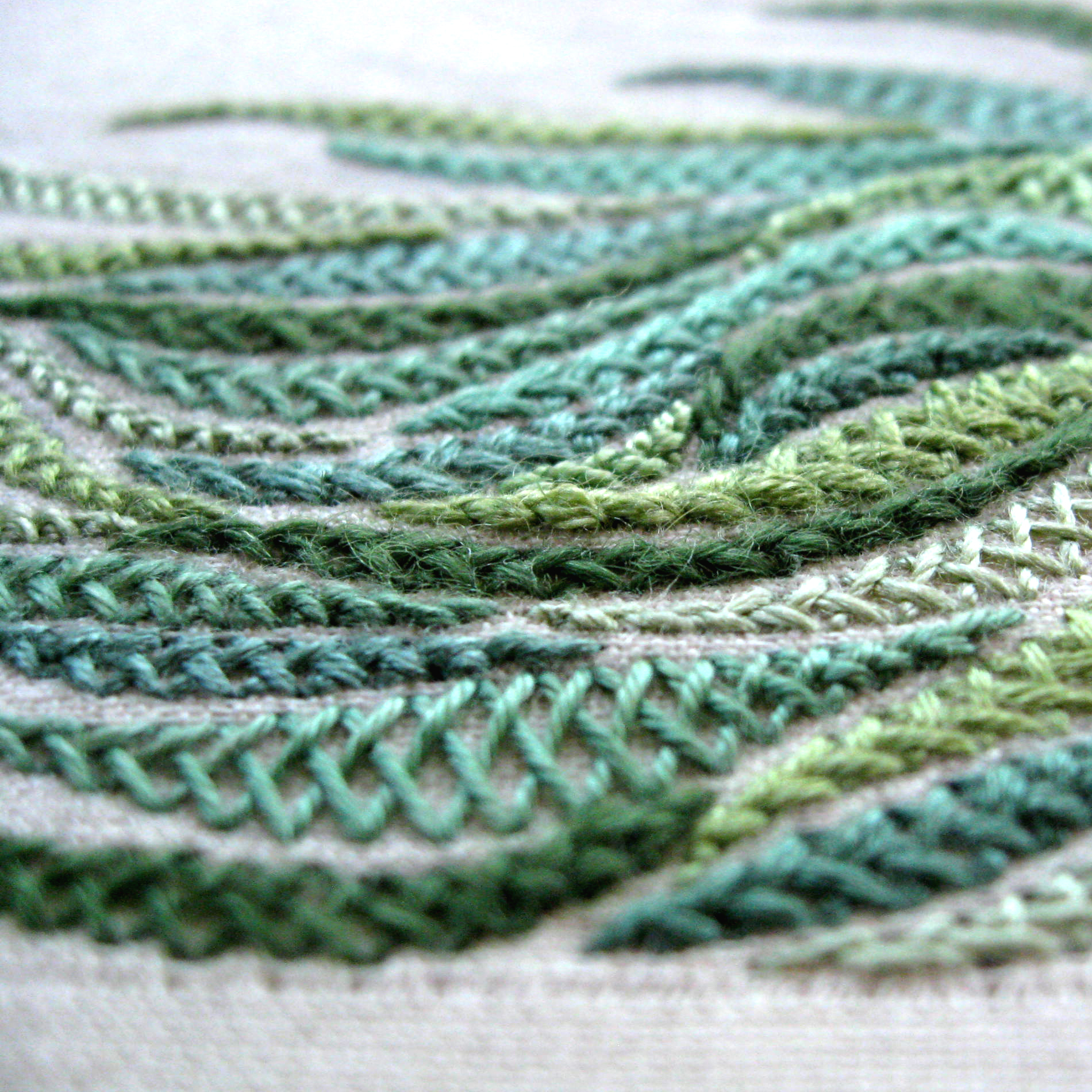
This is a visual, practical and modular based course, where each module is themed on technique, subject or design, and taught over 6 lessons either onsite, online, or as an intensive course.
It is a sampler-based course where four, 2-inch or 5-centimetre squares will be worked each lesson, based on traditional, historical, domestic, international and contemporary study.
Each module has a similar format, and will produce 24 samples in total, which includes learning traditional methods and techniques, and experimenting with new approaches. The outcome for each student is a personal body of work which can be used as an archive and reference, made into a cloth book, or mount into a body of work.
As the course develops, more modules based on technique, subject or design will be added, and students will be able to register with the modules of their choice.
The cost of each module is £750.00 for six days of tuition, which can be paid by instalment. To make bookings official, the RSN will ask for a non-refundable £50.00 deposit which will be included in the overall fee.
To sign up to an up-and-coming module contact us by emailing [email protected].
Dates
DURHAM (onsite) – Tutor Tracy Franklin: 10am to 4pm
Pattern– 26th February, 19th March, 7th May, 28th May, 18th June and 2nd July 2026. (1 space remaining)
Grids– 27th February, 20th March, 8th May, 29th May, 19th June and 3rd July 2026. (7 spaces remaining)
Knots (intensive course) – APRIL 2026: Tuesday 21st, Wednesday 22nd, Friday 24th, Saturday 25th; Tuesday 28th, Wednesday 29th. (6 spaces remaining)
ONLINE – Tutor Tracy Franklin: 2pm to 8pm
Grids – 24th February, 17th March, 5th May, 26th May, 16th June and 30th June 2026. (2 spaces remaining)
Grids – 25th February, 18th March, 6th May, 27th May, 17th June and 1st July 2026. (Fully booked)
HCP – Tutor Zina Kazban 10am to 4pm
Knots – 16th Jan, 6th Feb, 27th Feb, 27th Mar, 24th Apr, 15th May 2026 (10 spaces remaining)
Grids – 12th Jun, 10th Jul, 21st Jul, 21st Aug, 18th Sep, 16th Oct 2026 (10 spaces remaining)
Bristol – Tutors Sonia Lee (knots), Amanda Rymel (grids) 10am to 4pm
Knots – 24th Jan, 25th Jan, 28th Feb, 1st Mar, 28th Mar, 29th Mar 2026 (10 spaces remaining)
Grids – 19th Apr, 17th May, 31st May, 14th Jun, 28th Jun, 26th Jun 2026 (8 spaces remaining)
Modules in progress:
Online Knots – 30th Sep, 21st Oct, 11th Nov, 2nd Dec 2025, 13th Jan, 3rd Feb 2026
Online Knots – 1st Oct, 22nd Oct, 12th Nov, 3rd Dec 2025, 14th Jan, 4th Feb 2026
Durham Purls – 2nd Oct, 23rd Oct, 13th Nov, 4th Dec 2025, 15th Jan, 5th Feb 2026
Durham Knots – 3rd Oct, 24th Oct, 14th Nov, 5th Dec 2025, 16th Jan, 6th Feb 2026
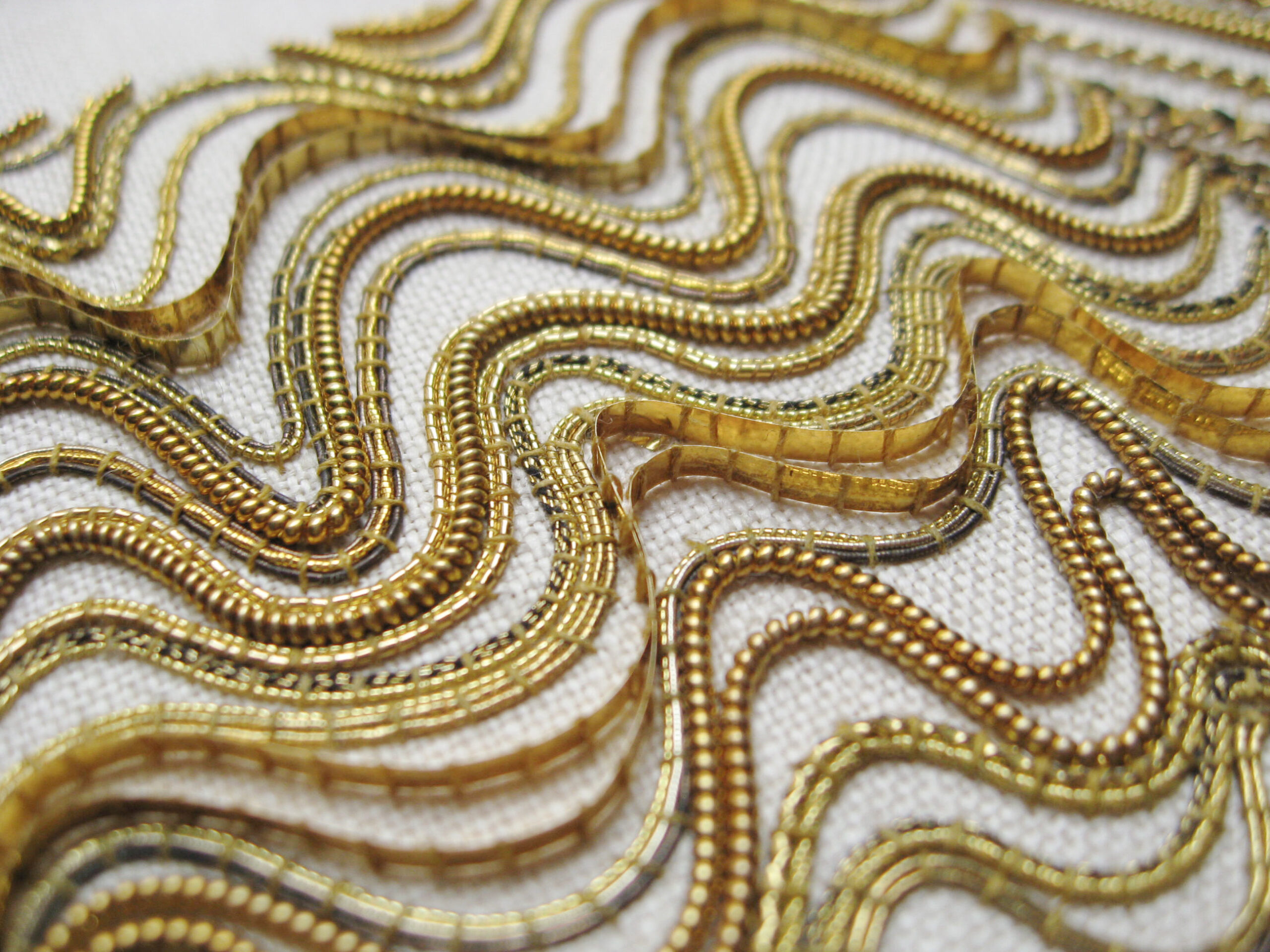
Get in Touch
To book please email us at [email protected] stating which module you would like to book and we will be touch with further details.
For more information on the Skills and Studies course please click here.
Get in touch with us to find out more about our course! Or take a look at our Frequently Asked Questions.
Modules
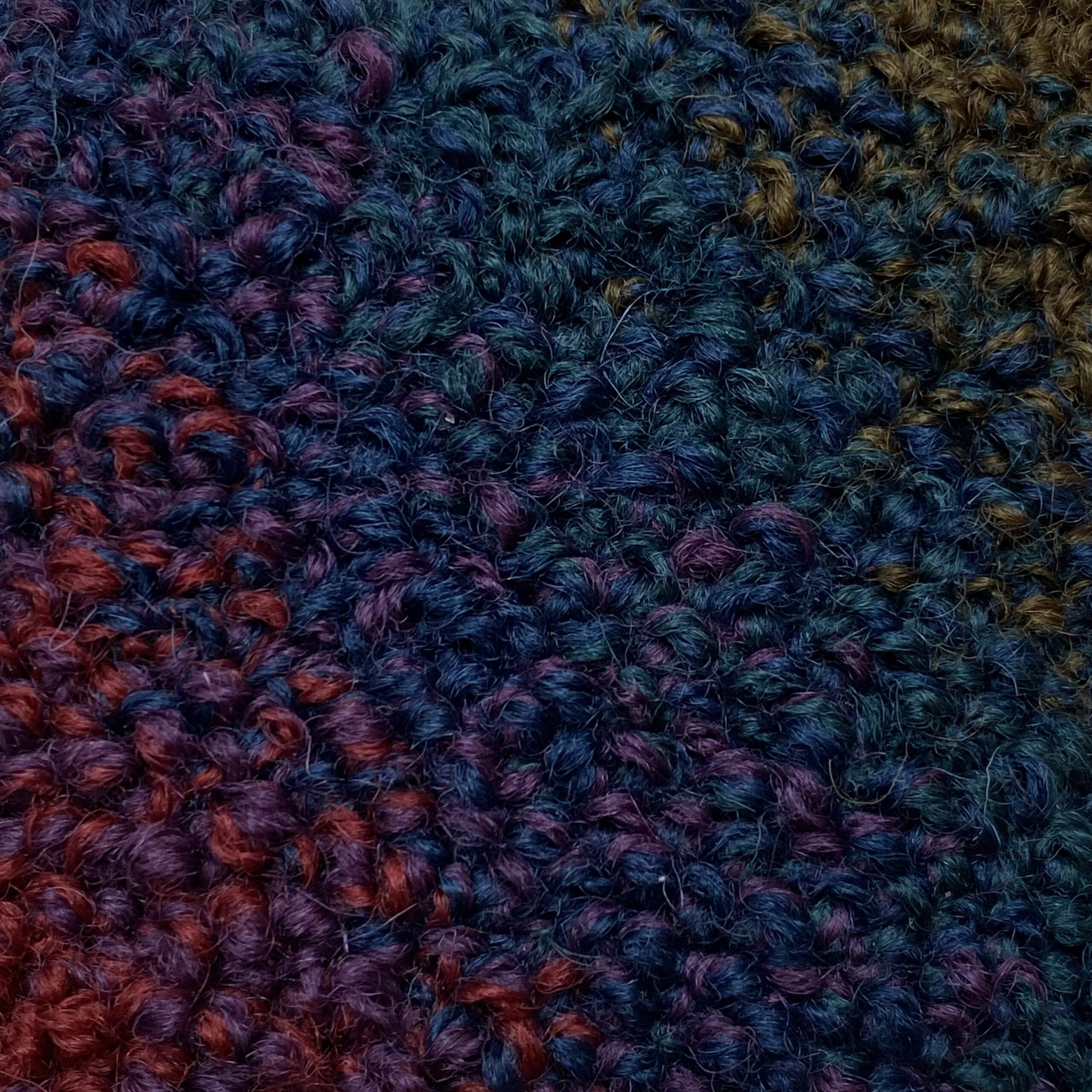
0001 – KNOTS
This module is based on knot stitches in embroidery including French knots, bullion knots, colonial knots and Peking knots. During the course, students will demonstrate how French knots can be used in size or proportion, blended by colour choices which will include some colour theory, as well as working with different thread and fibre types to create a variety of textures. Bullion knots will be worked in pattern formations, and historical, international and contemporary knot forms will be studied too.

0002 – GRIDS
Grids refers to the creation of forming a lattice pattern, framework, or criss-cross design used in surface embroidery. Basic traditional trellis work used in crewel work embroidery will be studied first, along with fillings such as satin or French knots to create pattern within the grid. Alternative and contemporary ideas based on trellis work will be explored, as well as laid work used in historic Jacobean embroidery, and interwoven Japanese Sashiko embroidery. Needle weaving will be taught in both traditional and alternative styles.

0003 – CANVAS
During this module, students will gain an understanding of the different types of canvas available. Samples will be worked on single, and double weave canvas, and a firm plain weave linen. Both basic and alternative canvas stitches will be taught. Basic will include a guide to the different types of tent stitch and the patterns that can be created, alongside straight, diagonal and cross stitches. Alternative will include more complex stitches patterns and their history and uses. Bargello or Florentine patterns will be covered and worked on a firm open linen fabric. Plus, the use of double canvas and its uses, and how it contrasts to single canvas.
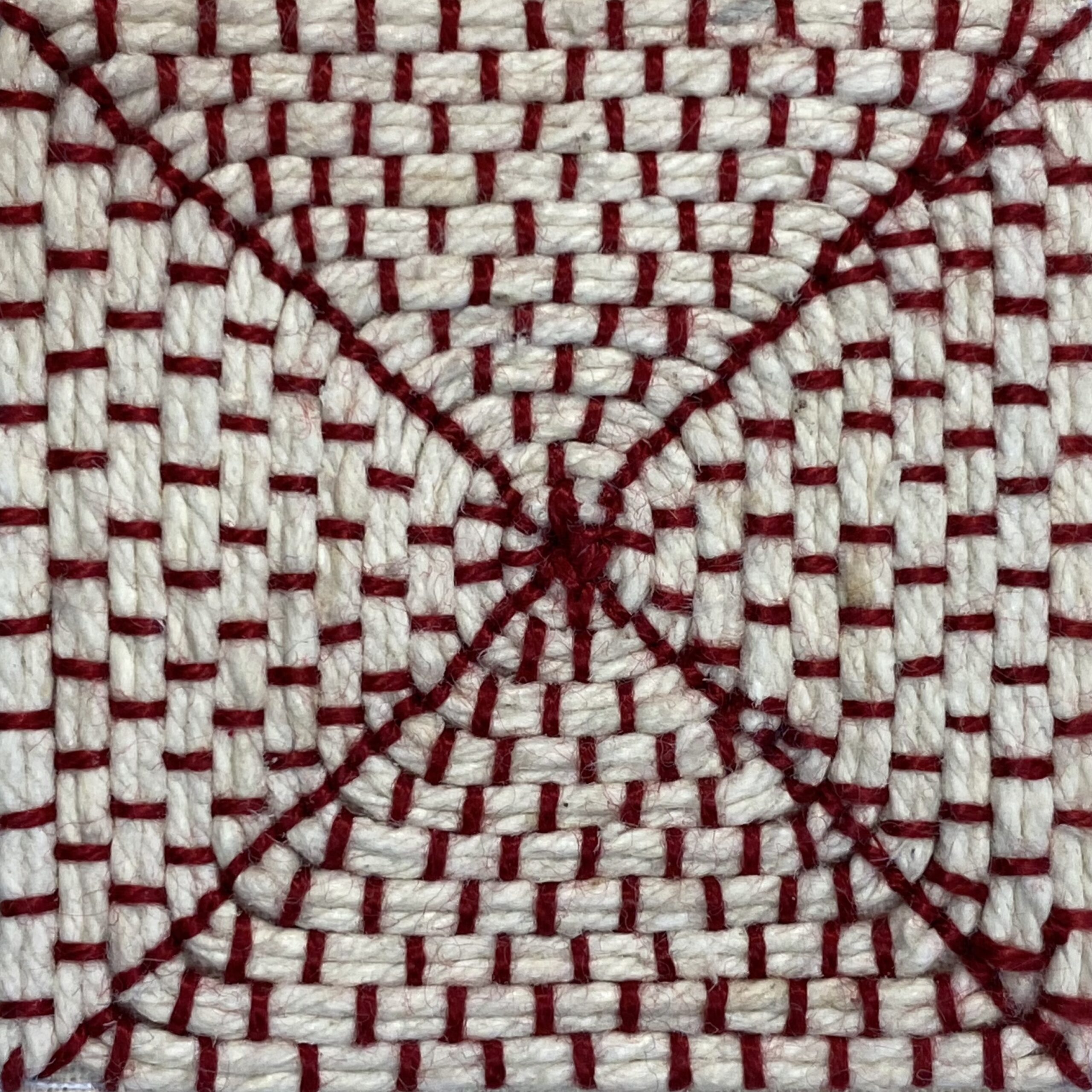
0004 – COUCHING
Couching is laying a decorative thread along the surface of the fabric and attaching or oversewing with small stitches at regular intervals. Traditional couching techniques will be learnt first including turns, curves, corners and spirals, along with plunging of ends. The module will also include couching with alternative threads involving metal, plastic, and organic thread types from nature. International couching including Chinese embroidery with a continual couched thread, and a Celtic woven knot pattern. Ecclesiastical underside couching, basket weave over string padding, and Or Nué involving colour shading and blending, will also be featured.
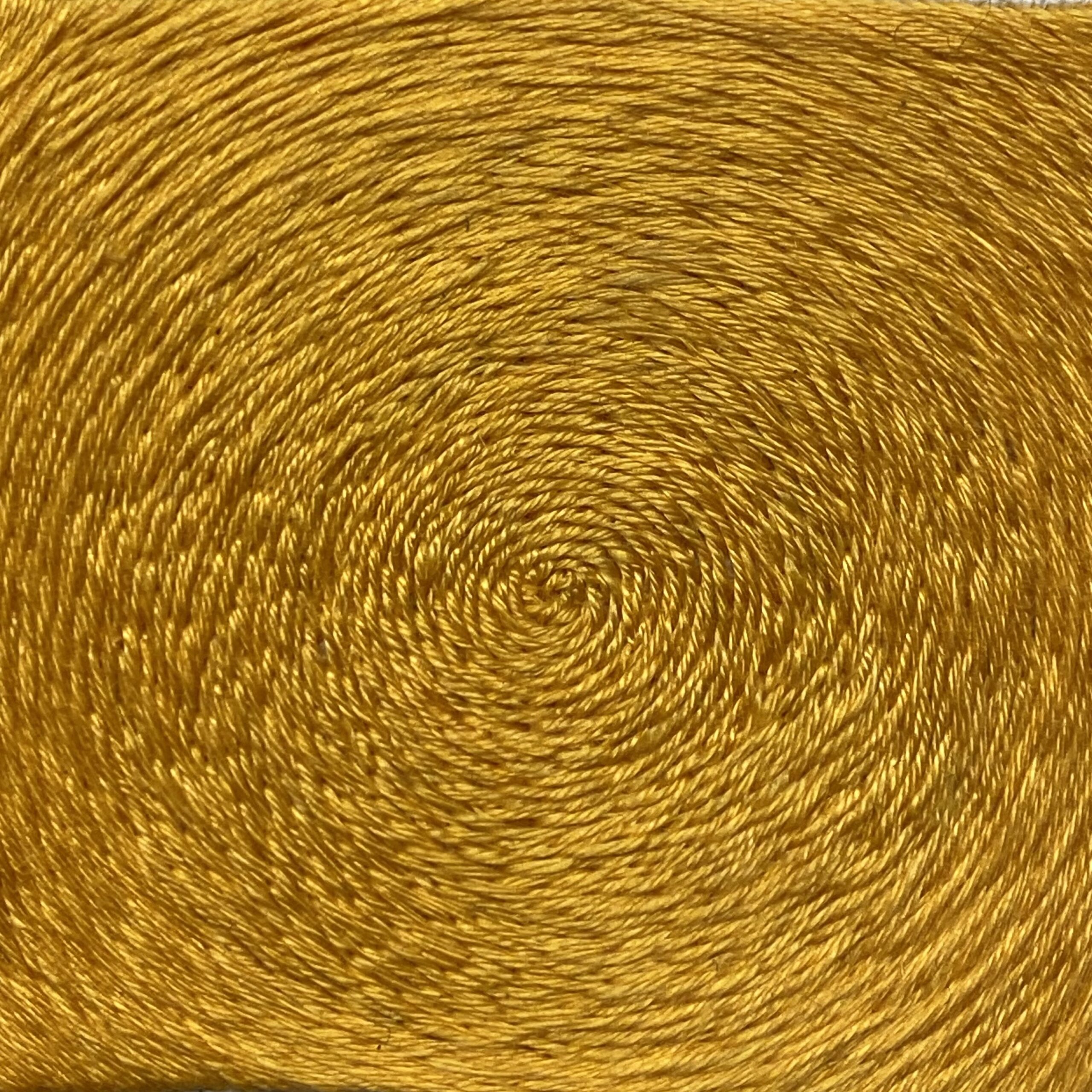
0005 – SHADING
Shading has many names including long and short, silk shading, thread painting, natural shading, and tapestry or vertical shading. During the course, students will learn to shade different curves and angles, also known as natural shading, as well as shading with different tints, and tones, and blend with hues of colour. Shading and blending with different thread and fibre types including wool, stranded cotton, rayon, etc will also be included, along with marked shading, creating alternative effects such as animal print and fur effects.

0006 – PURLS
Purls or bullion is a metal thread used in metal or gold work embroidery which is made of a very fine spiral of wire, which is then cut to a desired length and threaded like a bead. During this course, students will learn how to handle, and work with this type of wire in both a traditional and contemporary way, along with understanding the different types of wire that are available. Traditional approaches include working as a satin stitch, working over string padding whilst learning to cut accurately. Contemporary includes more playful approaches gaining knowledge of the properties of how purl or bullion threads can be manipulated to create different two- and three-dimensional effects.
